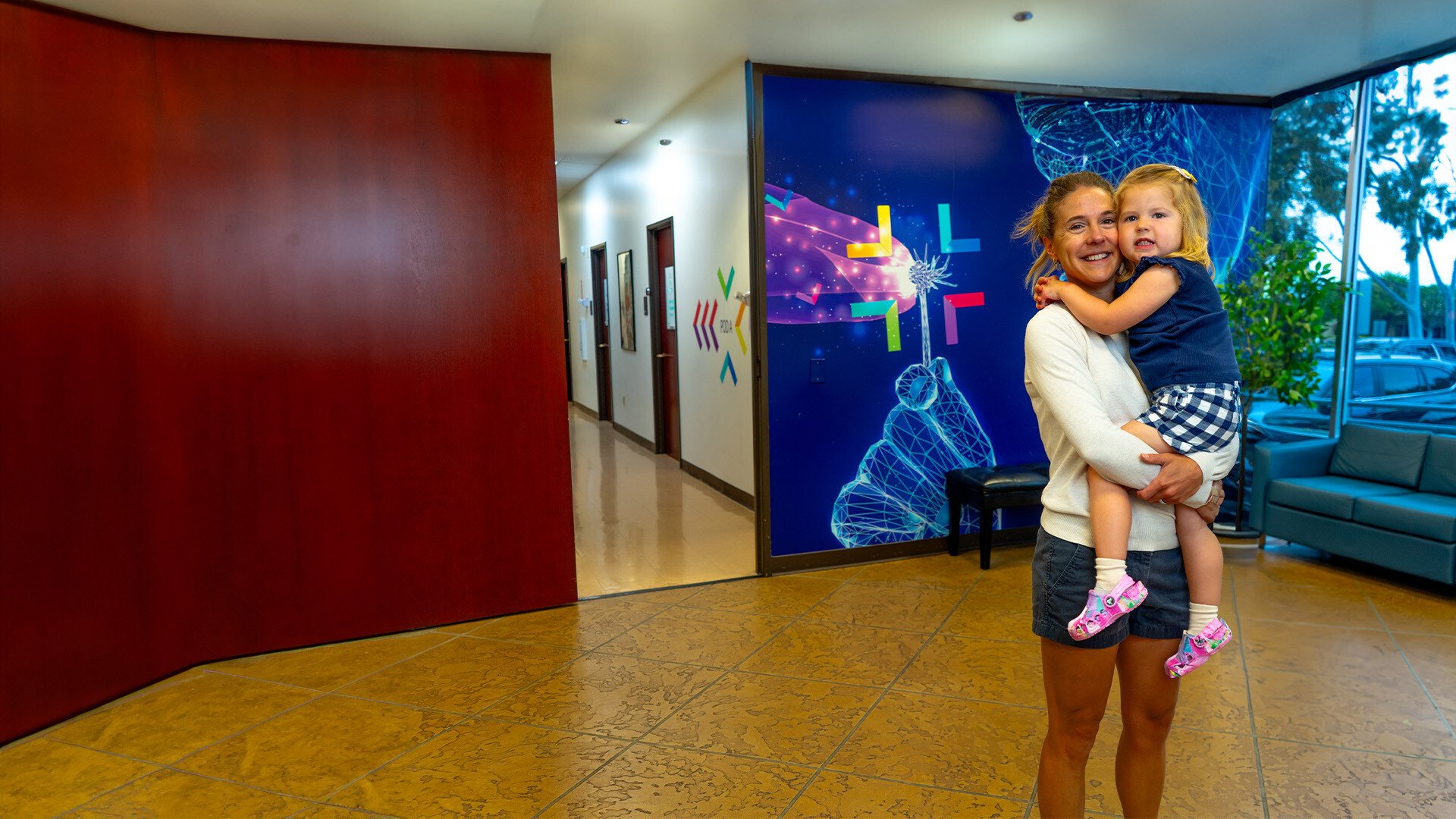A Treatment Plan As Unique As Your Child
Every individual has a distinct immune system. We believe your food allergy treatment should be as unique as your child. All TIP patients begin their journey with extensive diagnostic testing to capture the most complete image of the immune system and to build their custom plan.

Building Your Allergic Profile
Patient data is collected through a skin prick test, a blood draw, and a patch test performed at your initial TIP appointments. This data is the core of your custom plan and is used to build your allergic profile or a list of a patient’s allergens, ranging from tolerant, sensitized, and anaphylactic.

Blood Tests
All TIP patients are tested for an average of 130 allergen components. Our specialty lab carries an allergen menu of over 200 allergens, among the most diverse in the world.

Skin Prick Tests
Skin prick tests provide important information about IgE-mediated allergies, which is one of the many data points that help us design a custom treatment plan for each patient.
Patch Test
A patch that contains physical food allergens is placed on a patient’s back for 24 hours. This allows us to assess how a patient’s GI tract reacts to various allergens.
Your Custom Plan
Using advanced data analytics, we take the results from the skin prick test, blood test, and patch test to determine the safest and most effective treatment plan for a patient’s unique immune system.
This plan will determine the duration of treatment and the order in which a patient’s specific food allergies will be treated.

In-Clinic Food Challenge
Patients will challenge an allergen they have been previously sensitized to with home dosing under the supervision of our highly-trained medical team. After consuming an allergen, patients must increase their heart rate through 5 minutes of exercise to stress their immune system. Food challenges are passed if a patient does not have any symptoms after exercise.
Treatment foods are introduced and monitored in the clinic for 15 minutes to ensure a patient can tolerate it. Patients will up-dose treatment foods at home as part of their at-home regime.
At-Home Dosing
Every TIP patient will receive a personalized at-home dosing regime to build tolerance between in-person visits. Consistent at-home dosing can indicate a patient’s success in their next food challenge.
Home dosing consists of recommended foods, maintenance foods, & treatment foods. These foods help condition and retrain a patient’s immune system.

Recommended Foods
These are safe foods (non-allergic) that share a similar molecular structure with a patient’s allergens. Recommended foods prep the patient for treatment foods. For example, apples share similar proteins to cashews!

Treatment Foods
Treatment foods contain small milligram amounts of a patient’s allergens. FAI has developed proprietary allergen gummies to ensure dosing accuracy and ease.

Maintenance Foods
Treatment foods that have passed a food challenge will become maintenance foods to help patients maintain and build their tolerance.
Treatment Milestones
As treatment progresses, patients achieve a variety of life-altering milestones, including bringing allergens back into the home, clearing cross-contamination, trying new foods, and attending social gatherings. Many patients see results within a year!*

“I know we have so many more victories ahead of us. But the ones we’ve experienced so far is completing so many of our nut allergies and having more shelf options in your popular grocery stores. Finding crackers or milk or flour mixtures that the rest of the population buys is huge!… Never in my wildest dreams did I ever think that would be possible for us. Life is slowly becoming more normal for us.”
TIP Parent
Food Freedom!
Food Freedom, or Remission, means no more reading food labels, no more missed birthday parties, and no more food anxiety or stress.
Patients can eat freely without restriction or fear of reaction. Regain your confidence and live a life of endless opportunities without the fear of food allergies!

FAQ
What lab is used for testing?
TPIRC Diagnostics is a CLIA and COLA Certified, high complexity laboratory focused on supporting the diagnostic requirements for our treatment. Our lab is currently the only diagnostic facility that is able to perform the complete set of tests necessary to develop and maintain the treatment plans utilized in the Tolerance Induction Program. Our pediatric phlebotomists perform the blood draw at the clinic after you have completed your clinic appointment.
Are environmental allergies treated?
Pre-treatment may also include targeted treatment (specific to your child’s case) of environmental allergies utilizing Sublingual Immunotherapy (SLIT). SLIT is a safe and effective approach that has been used to treat environmental allergies for over 60 years. Approximately 45% of our patients are required to go on SLIT to facilitate their food allergy treatment process. Your family will be instructed if your plan requires SLIT. This is generally discussed at your Launch Visit.
How often are appointments?
The number of in-person visits may vary depending on the individual’s custom plan and a patient’s location. However, patients typically visit our clinic four to six times a year.
How long is treatment?
There are a number of factors that determine the length of treatment. Age, severity of allergens, type of allergen, family history, health history, etc. All must be considered when designing the patient’s unique protocol. The length of treatment will vary based on each patient’s individual plan. At the end of the second visit, you will have a clear idea of how long your treatment length will be. Generally, the average treatment timeline is 2.5 – 4 years.
More Questions? Schedule a Complimentary Consultation with Our Experts Today!


